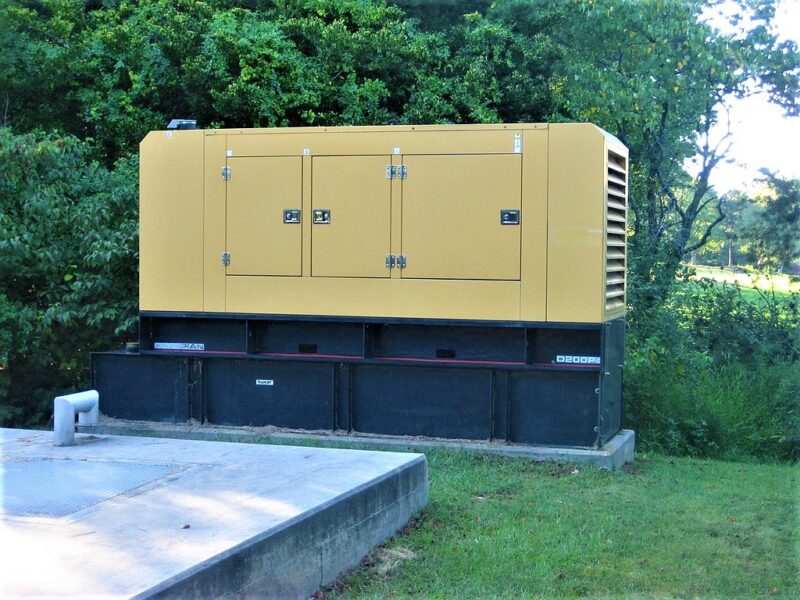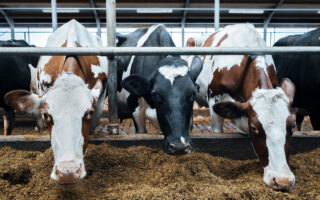You may know that there are many air quality-related regulatory requirements for stationary Reciprocating Internal Combustion Engines (RICE), but did you also know that generator engines used for emergencies and those used for non-emergency operation are not subject to the same regulatory requirements?
Federal regulations for non-emergency generator engines
There are three common federal standards you should be aware of if you operate, or are planning to operate, an electrical generator engine at your facility. These include:
- the New Source Performance Standards (NSPS) for Stationary Compression Ignition Internal Combustion Engines (40 CFR pt. 60, subp. IIII), primarily for natural diesel-powered engines;
- the NSPS for Stationary Spark Ignition Internal Combustion Engines (40 CFR pt. 60, subp. JJJJ),primarily for gas-driven engines; and
- the National Emissions Standards for Hazardous Air Pollutants (NESHAP) for Stationary Reciprocating Internal Combustion Engines (40 CFR pt. 63, subp. ZZZZ), all fuel types.
Each of the three federal standards listed above defines an emergency stationary RICE as an engine that is operated to provide electrical power or mechanical work during an emergency situation, with limited exceptions. Using an engine for demand response or peak shaving (i.e. using the engine to generate power during peak energy demand hours), or operating an engine for more than 100 hours per year in non-emergency situations (such as for maintenance or performance testing reasons) will generally disqualify the engine from being considered an emergency engine under federal, state, and/or local air quality regulations.
What to do when these regulations do not apply?
If you determine that your engine might not qualify as an emergency use engine, you may need to perform potential-to-emit (PTE) emissions calculations based on an assumption of 8,760 hours of operation per year. PTE calculations are used to compare your facility’s potential air emissions to applicable air quality permitting thresholds. Depending on the size (horsepower) of your engine(s), as well as other air emissions sources at your facility, you may be required to obtain an air quality construction or operating permit for this equipment. This may especially be true in areas that are not in attainment with the National Ambient Air Quality Standards (NAAQS) for combustion- related emissions (such as particulate matter or ozone).
The federal emissions standards for non-emergency engines are also more stringent than the standards for emergency use engines. Your facility may be required to retrofit an engine with air pollution control equipment such as a catalyst, diesel particulate filter, or non-catalytic reduction (urea injection) to meet these emissions standards. The federal standards typically also require periodic performance testing and routine report submittals for non-emergency engines.
What about state and local requirements?
Some state and local agencies have additional permitting requirements that apply to non-emergency engines. In Texas, this may include requirements to meet certain emission standards, perform dispersion modeling, and meet minimum stack height requirements (30 TAC §106.512 Stationary Engines and Turbines). In Minnesota, installation of a non-emergency engine may result in requirements to perform air dispersion modeling if you are otherwise required to obtain an air permit. Facilities located in Minnesota with non-emergency compression ignition engines with a displacement of 30 liters/cylinder or more are also ineligible from obtaining a registration or capped permit. Many states other than Texas and Minnesota have similar regulatory requirements for non-emergency engines.
Modeling challenges
Internal combustion engines using diesel fuel and/or natural gas typically have high nitrogen oxides (NOX) emissions and demonstrating compliance with the NAAQS for NOX through an air dispersion modeling analysis can be difficult in many circumstances. These air dispersion modeling analyses may potentially dictate the location, minimum stack height, maximum emission rates, or air pollution control equipment required for your engine. Prior to installing any emergency or non-emergency engine, you should review the state and local agency engine requirements to determine what requirements might apply to your facility.
If you feel that your generator engine does meet the emergency use requirements, maintaining accurate records of hours and reasons for operation of the engine is important to maintaining rule exemption requirements.
One of our technical experts will be happy to assist you with navigating these environmental regulations, determining whether your facility needs an air permit, and applying for and obtaining any required environmental permits. Please use our contact our form to the right if you would like to talk with one of our consultants.

